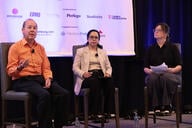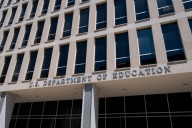You have /5 articles left.
Sign up for a free account or log in.
By far the most significant higher education case out of the U.S. Supreme Court Monday was its affirmative action ruling in Fisher v. University of Texas at Austin (see our coverage here). But universities were parties in two other decisions by the justices as well, and while the issues at play were not specific to higher education, the rulings have implications for colleges as well as other employers.
In both cases, the Supreme Court, divided 5 to 4, narrowly defined employees' rights under Title VII of the Civil Rights Act. In Vance v. Ball State University, the majority endorsed a restrictive definition of which kinds of managers count as "supervisors" for purposes of defining discrimination that automatically can be ascribed to the employer. The case involved a cafeteria worker who suffered abuse at the hands of a fellow worker whom she considered to be a supervisor.
In University of Texas Southwestern Medical Center v. Nassar, the court adopted a stricter standard for retaliation claims than for other types of employment discrimination. The case involved a Middle Eastern physician who believed that he had been discriminated against by a Jewish supervisor and was then retaliated against for complaining about the alleged harassment.
Full analysis of the cases can be found at SCOTUSBlog.




